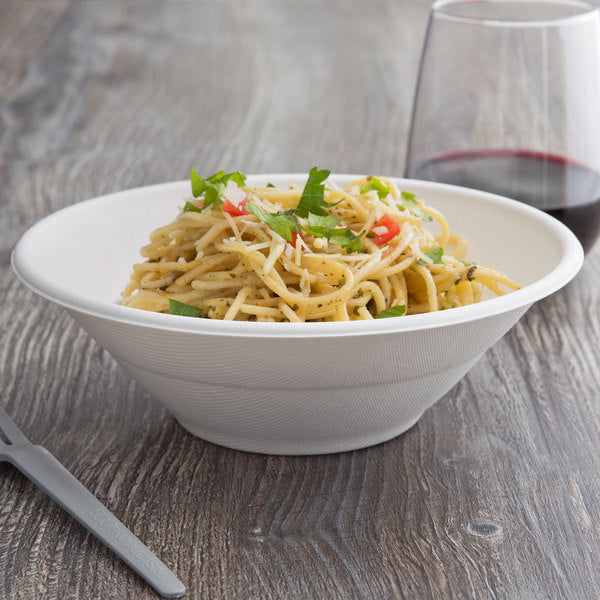Ground beef is an extremely popular ingredient in global cuisine, appearing in a variety of dishes from hamburgers, meatloaf to bolognese. To prepare delicious and nutritious dishes from ground beef, it is extremely important to understand this type of meat, how to classify, preserve and use it. In this article, we will learn about ground beef in detail from these aspects.
- What Do Beef Grades Mean? Different Grades Of Beef
- What Is Lard? What are Benefits of Lard? How To Make Lard & Store Lard
- How to Defrost Meat Safely? How Long Does It Take Meat to Thaw?
- What Are Burnt Ends? How to Make Burnt Ends?
Ground Beef Overview
What is Ground Beef?
Ground beef (also called minced beef, or beef mince) is sourced from cattle and ground into fine pieces to tenderize tougher cuts. This is a primary component of many popular dishes, including burgers, meatballs, tacos, and meat sauces.
Depending on the ratio of lean to fat, ground beef can have different flavors and fat content, suitable for many different dishes. It is an indispensable ingredient in many traditional dishes such as hamburgers, meatloaf, and bolognese.

The Role of Ground Beef in Global Cuisine
Ground beef plays an important role in the cuisines of many countries. From Italian spaghetti bolognese, Mexican tacos, to American burgers, ground beef contributes to the unique flavor of each dish. Additionally, ground beef is used in Asian dishes such as Thai basil beef stir-fry or steamed buns.
Types of Ground Beef
Ground Beef From Different Cuts
Ground beef is classified based on the ratio of meat to fat content. Here are the most common types of ground beef:
Ground Beef (70/30)
This variety contains 70% lean meat and 30% fat content. It is the fattiest option, offering excellent flavor and juiciness, making it suitable for dishes that benefit from the added moisture and richness.
- Ground Beef Fat Content - 70% lean 30% fat (70/30)
- Ground Beef Source - A blend of leftover beef trimmings
- How to Use Ground Beef - Juicy burgers cooked on the grill
- Other Names for Ground Beef - Ground hamburger, hamburger meat

Ground Chuck (80/20)
Ground chuck consists of 80% lean meat and 20% fat content. It strikes a balance between flavor and fat content, making it a popular choice for burgers, meatloaf, and meatballs.
- Ground Chuck Fat Content - 80% lean 20% fat (80/20)
- Ground Chuck Source - Neck and shoulders
- How to Use Ground Chuck - Burgers, meatballs
- Other Names for Ground Chuck - Ground beef chuck

Ground Round (85/15)
Ground round contains 85% lean meat and 15% fat content. With a slightly leaner profile, it is suitable for recipes where you desire a good balance between tenderness and lower fat content.
- Ground Round Fat Content - 85% lean 15% fat (85/15)
- Ground Round Source - Hind portion of the cow
- How to Use Ground Round - Taco meat, seasoned crumbles, meatloaf
- Other Names for Ground Round - Ground beef round

Ground Sirloin (90/10)
Ground sirloin is the leanest option, comprising 90% lean meat and 10% fat content. It is ideal for those seeking a leaner alternative while still enjoying the flavor and texture of ground beef.
- Ground Sirloin Fat Content - 90% lean 10% fat (90/10)
- Ground Sirloin Source - Sirloin subprimal (mid-back)
- How to Use Ground Round - Meat sauces, chili, lasagna, hamburger steak
- Other Names for Ground Round - Extra-lean ground beef

Graded by Leanness
Ground beef is also graded based on the ratio of lean to fat:
- Regular Ground Beef: Contains about 70-85% lean, the rest is fat. This type is suitable for dishes like burgers, because the fat adds moisture and flavor.
- Lean Ground Beef: Contains about 85-90% lean, a good choice for dishes that require less fat like meatloaf or tacos.
- Extra-Lean Ground Beef: Contains over 90% lean, often used in dishes that require less fat like bolognese or stuffed peppers.
How to Identify High-Quality Ground Beef
When selecting ground beef, pay attention to the color, aroma, and texture of the meat. High-quality ground beef is usually bright red, has a mild beefy aroma, and is free of foreign odors. The meat should have a smooth texture, not too moist or too dry, and should have no signs of bruising or uneven grain.
How to Store Ground Beef
Fridge and Freezer Storage Instructions
Ground beef can spoil easily if not stored properly. To keep it fresh, store it in the refrigerator at a temperature below 4°C and use it within 1-2 days. If not using it right away, freeze ground beef at -18°C for long-term storage, up to 3-4 months. When freezing, divide ground beef into bite-sized portions for easy thawing and use.
Tips for Keeping Ground Beef Fresh for a Long Time
- Cover: Use plastic wrap or a vacuum bag to cover ground beef before storing. This helps prevent air from coming into contact with the meat, minimizing the risk of oxidation and keeping the meat fresher for longer.
- Defrost Properly: When ready to use, defrost ground beef slowly in the refrigerator overnight. Avoid defrosting at room temperature as this can increase the risk of bacterial growth.

Signs of Spoiled Ground Beef
Spoiled ground beef will often have a sour smell, turn grayish-brown in color, and have a slimy texture. If you notice any of these signs, throw the meat away to avoid the risk of food poisoning.
Using Ground Beef in Cooking
Popular Dishes with Ground Beef
Ground beef is the main ingredient in many famous dishes:
- Hamburger: One of the most popular dishes in the world, hamburgers are made from ground beef pressed into a thick patty, then grilled or pan-fried.
- Meatloaf: A traditional American dish, meatloaf is made from ground beef mixed with onions, bread crumbs, and spices, then baked in the oven.
- Bolognese: Italian ground beef sauce, slow-cooked with tomatoes, onions, and spices, often served with pasta.

- Tacos: A famous Mexican dish filled with ground beef, spices, vegetables, and cheese, wrapped in a tortilla.
- Stuffed Peppers: Bell peppers stuffed with ground beef, rice, vegetables, and spices, then grilled until tender.
How to Choose the Right Ground Beef for Each Dish
Each dish has its own requirements for ground beef:
- Hamburger: Regular ground beef with a high fat content is ideal for creating a tender and flavorful burger.
- Meatloaf: Lean ground beef will keep the meatloaf tender and moist without being too fatty.
- Bolognese: Extra-lean ground beef makes for a healthy, low-fat bolognese sauce.
- Tacos: Lean or extra-lean ground beef are both suitable, depending on personal preference for the fat content of the dish.
Tips and Techniques for Cooking with Ground Beef
- Doneness: To ensure safety, ground beef should be cooked all the way through to an internal temperature of at least 160°F (71°C).
- Remove excess fat: When cooking dishes that require less fat, drain excess fat after cooking by draining the meat on paper towels.
- Seasoning: Ground beef pairs well with many spices such as garlic, onion, black pepper, and paprika. Depending on the dish, you can adjust the spices accordingly.
Nutritional Benefits of Ground Beef
Basic Nutritional Value of Ground Beef
Ground beef is a source of high-quality protein, iron, zinc, and vitamin B12. A 100g serving of ground beef provides about 25g of protein, which helps support muscle growth and maintain overall health. It also contains iron, which helps support hemoglobin production and provides energy to the body.
Health Benefits of Using Ground Beef Properly
Using ground beef properly can bring many health benefits, including:
- Energy supply: Ground beef is rich in protein and fat, which helps provide abundant energy to the body.
- Support muscle growth: With a high protein content, ground beef is an ideal food for those who want to increase muscle.
- Improve the immune system: Thanks to its high zinc and vitamin B12 content, ground beef helps improve the immune system and support nerve function.
Things to Keep in Mind When Using Ground
- Limit fat intake: If you are watching your fat intake, choose lean or extra-lean ground beef to reduce the amount of fat in your diet.
- Incorporate with vegetables: To increase nutritional value, combine ground beef with a variety of vegetables in your diet.
- Cook thoroughly: Always make sure ground beef is thoroughly cooked to kill harmful bacteria, avoiding the risk of food poisoning.
Frequently Asked Questions About Ground Beef
What is the Difference Between Ground Beef and Ground Meat?
Ground beef is ground beef, while ground meat can be a mixture of different meats such as pork, chicken, or lamb.
How Do I Know if Ground Beef is Safe to Eat?
Ground beef is safe to eat when it is fully cooked and has no strange odor or color change. Use a food thermometer to ensure the internal temperature is at least 160°F (71°C).
Should You Wash Ground Beef Before Cooking?
It is not recommended to wash ground beef before cooking as this can spread bacteria from the meat to other surfaces in the kitchen. Instead, cook it thoroughly to kill bacteria.
Is Ground Beef Healthy?
Ground beef has both pros and cons. Ground beef is a great source of protein, iron, and several essential vitamins and minerals. However, it can be high in saturated fat and cholesterol, depending on the cut and fat percentage.
So, you should choose leaner ground beef, and consuming it in moderation can help you enjoy its benefits while minimizing potential health risks.
What's in Ground Beef?
- If the package is labeled "ground beef", the meat will contain a blend of leftover trimmings. All the pieces of lean meat and fat that are left after portioning the cow will be put through a meat grinder to produce ground hamburger.
- If the package of ground beef is labeled ground sirloin, ground round, or ground chuck, the meat comes from those portions alone.
Is Ground Sirloin the Same as Ground Beef?
A package labeled ground beef is different from a package labeled ground sirloin. Ground beef is a blend of different trimmings, in contrast, ground sirloin comes from the loin cut only.
Is Ground Sirloin Good for Burgers?
Ground sirloin is not suitable for burgers because it contains very little fat. Instead, try ground chuck (80/20) or ground beef (70/30).
What Is Ground Chuck Used For?
Ground chuck can be used for hamburger patties or meatballs.
What's the Difference between Ground Round and Ground Chuck?
Ground chuck comes from the neck and shoulders, ground round comes from the hind quarters, and has less fat. While ground round is slightly more healthy, ground chuck has a bit more flavor.
What's the Difference between Ground Round vs Ground Beef?
Ground round is a type of ground beef, sourced only from the round primal. Ground round is a great option for dishes that you don't want swimming in grease, and ground hamburger is ideal for juicy hamburgers cooked on the grill.
What Cuisines Use Ground Beef?
Ground beef is featured in various cuisines such as American, Italian, Mexican, and Middle Eastern dishes.
Conclusion
Ground beef is a versatile and nutritious ingredient, but to get the most out of it, you need to know how to classify, store, and use it properly. Understanding the different types of ground beef, how to choose the right type for each dish, and basic cooking techniques will help you create delicious and nutritious meals. Always pay attention to quality and food safety when using ground beef in your daily diet.
Related Articles:







